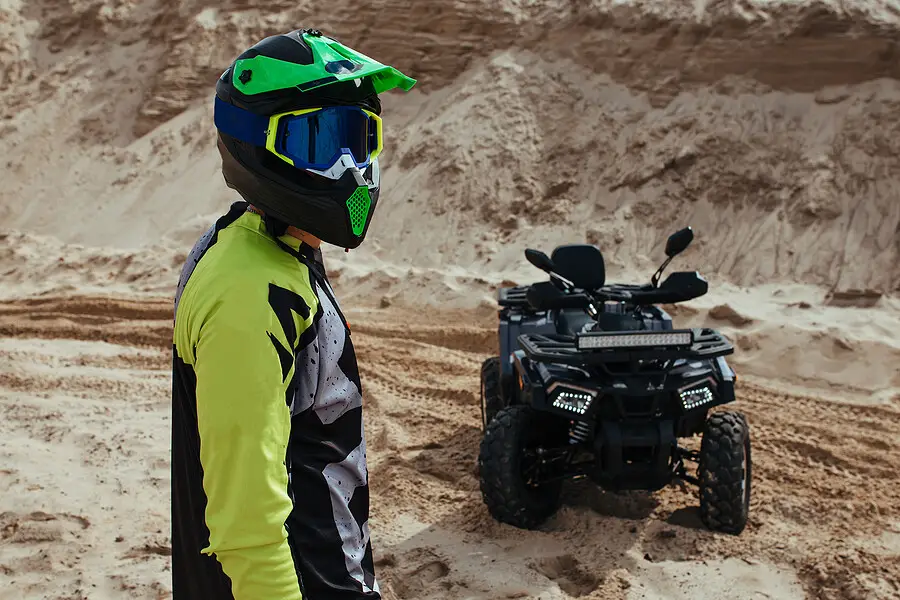Four wheelers also known as ATVs and UTVs, come in different styles and types according to what the rider is looking to experience. Before you select one to buy or even hop on one to ride, knowing the payload capacity of that particular ATV is key in making sure it can safely support you. Since there are different ATVs on the market we’ll give you a general overview of ATV payload based on the general style of the four wheeler.
Payload Capacity vs Towing Capacity
What the ATV can do as a utility vehicle assisting with a task is a little different than what it can do as a recreational vehicle providing twists, turns, and overall excitement. Knowing how much it can pull when something is hitched to it in some way, shape or form is better known as the tow or towing capacity of the ATV. This numbers says that “x” amount of weight can be pulled by linking it to the ATV. Knowing how much it can carry on it as you ride it (including rider weight, the cargo the ATV is carrying and anything else baring down on the vehicle) is defined as the payload which is of course different in what it means for you and your ATV. Here is a general list of ATV payload in comparison to towing capacity as it relates to engine size, ATV Type, speed and weight.
***Keep in mind these numbers represent a ballpark average for general ATV types. Consult your owner’s manual for specifics as it relates to your particular ATV***
| ATV Type | Weight (lbs) | Seating Capacity | Engine Size (cc) | Payload Capacity (lbs) | Towing Capacity (lbs) | Top Speed (MPH) |
|---|---|---|---|---|---|---|
| Sport ATV | 350 – 400 | 1 | 200 – 450 | 200 – 250 | 200 – 300 | 55 – 75 |
| Utility ATV | 600 – 800 | 1 – 2 | 350 – 600 | 400 – 600 | 1000 – 1500 | 50 – 65 |
| Side by side ATV | 1,200 – 1,600 | 2 – 4 | 500 – 1000 | 800 – 1,500 | 1200 – 2000 | 45 – 75 |
| Youth ATV | 210 – 250 | 1 | 50 – 125 | 150 | 100 – 200 | 10 – 30 |

Sport ATV Payloads
Sport ATVs are not typically designed with towing capacity in mind but more for competition or recreational enjoyment in general. Because of this, most of the payload is geared to accommodate one rider of about average size for an adult male (200 to 250 pounds). Smaller framed riders would be ideal riders for executing high risk maneuvers like those you see in motocross type events as it gives the four wheeler more potential for lift. Either way you want to stay in the ATVs payload wheelhouse if you want to avoid performance and safety issues.

Youth ATV Payloads
Youth ATVs can be tempting to the eye of an adult male or female. Sometimes a bigger sized Youth model can give you the impression that it can handle an adult riding it just as it may a child. But don’t let your eyes deceive you, these are typically smaller in frame and lighter with smaller engines which is the average payload is much smaller. Average payload for youth ATVs maxes out around 150 pounds which is smaller than most of the adult males I know (even some of the adult women I know but tell them you got that from me!). Keep this in mind when you consider just how big the “youth” is that may be riding the ATV once it arrives.

Utility ATV Payloads
Utility ATVs have a payload that almost triples the average Sport ATV because it can hold up to 2 people and it has a bigger engine as its built to be a work companion. Utility ATVs are also known as “quad bikes”. You won’t find too many of these flying through the air at a dirt track but you may see some riding around with a two man med team just in case things get a little bumpy for the sport riders.

Side-by-side ATV Payloads
Side-by-side or UTV style ATVs are the heaviest framed four wheelers on the market and they also have the greatest of payload. Knowing that the design is meant to carry multiple passengers it is no surprise that the payload for these types of four wheelers range around 800 to 1500 pounds with up to four passengers accommodated to ride. These are the ultimate dual threat vehicles that have payloads broad enough to carry both cargo and people within its parameters.

